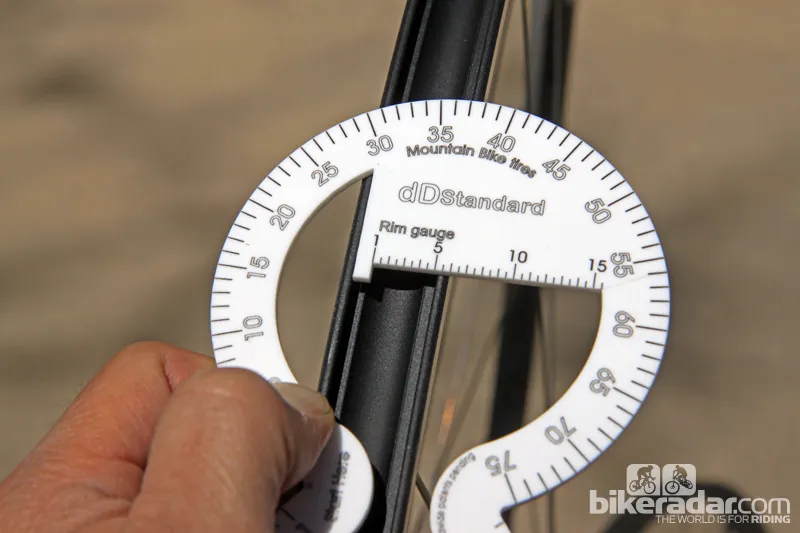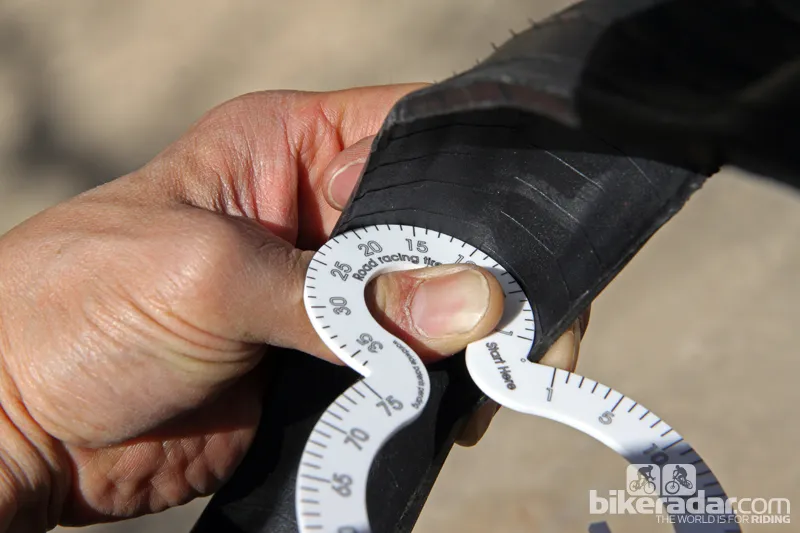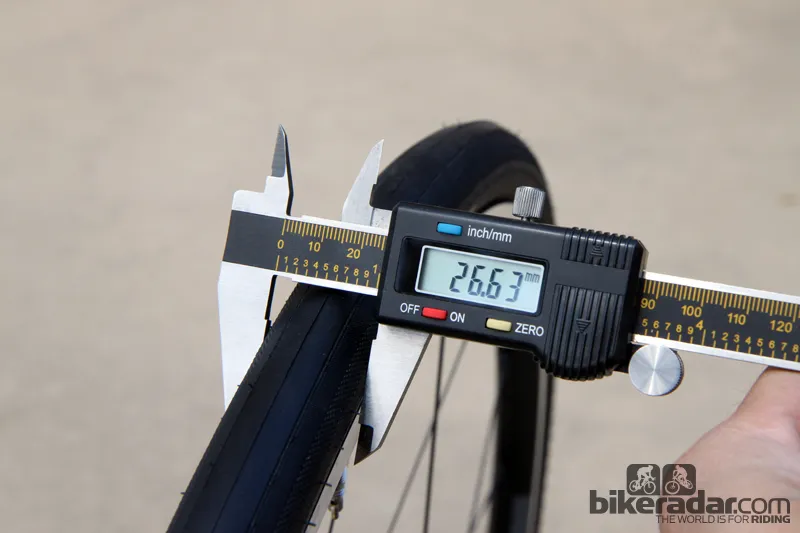Stated tire sizes can be notoriously random, with one company's "2.3-inch" or "23mm" sometimes differing significantly from identically badged tires from another brand – and possibly neither measuring true to size. Occasionally, there are even inconsistencies within a brand. I can't magically make every hot stamp adhere to reality but I do have a solution – state the rim width at which they measure the labeled size.
Predicting the width of tubulars is relatively simple. After all, they have almost perfectly circular cross-sections so if you know the circumference of the casing (in this case, its width before stitching), you can calculate the diameter – easy as π.
Clinchers are trickier. While the cross-section is still nominally circular when inflated, the tire itself only comprises part of the circumference. Plus, the internal bead-to-bead width can vary wildly from rim to rim with drastic effects. For example, a "700x23mm" road tire could measure 21mm on one rim but 25mm on another.
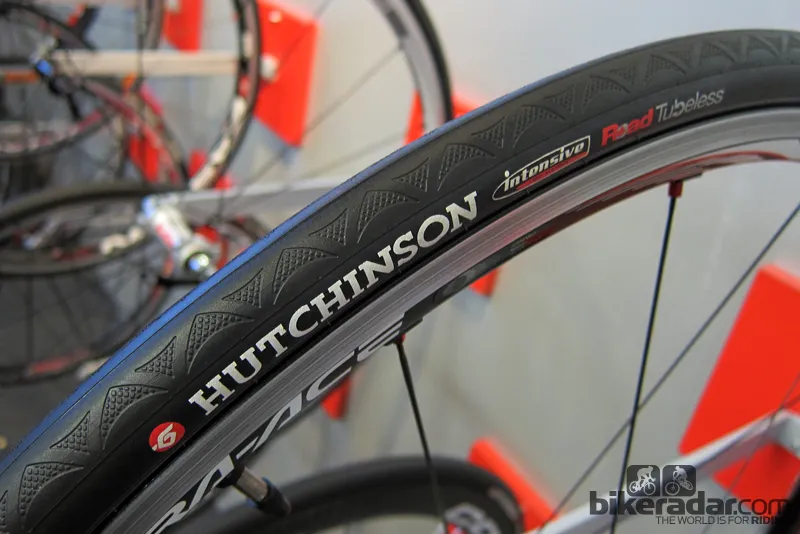
Hutchinson's old Intensive Road Tubeless tire was marked 25mm, but was actually much narrower
Unfortunately, rim widths are becoming more divergent, not less – and it's critical to note that we're talking internal width here, not external. For example, Mavic's latest Cosmic Carbone 40 C clinchers have an internal width of just 15mm while HED's new Ardennes Plus extrusion is nearly 20mm across – a full 33 percent wider. Likewise, Easton's supposed "all-mountain" Haven Carbon rims are 21mm wide while Syntace now has its 'MX' series of wheels with widths up to 33.5mm – nearly twice that of Mavic's current Crossmax SLR.
Tire makers therefore base stated measurements on the rim dimension they think a rider will use. It seems they have a 50/50 chance of getting it right — and a 50/50 chance of having a satisfied customer.
The fix is conceptually easy: just add another number to the label.
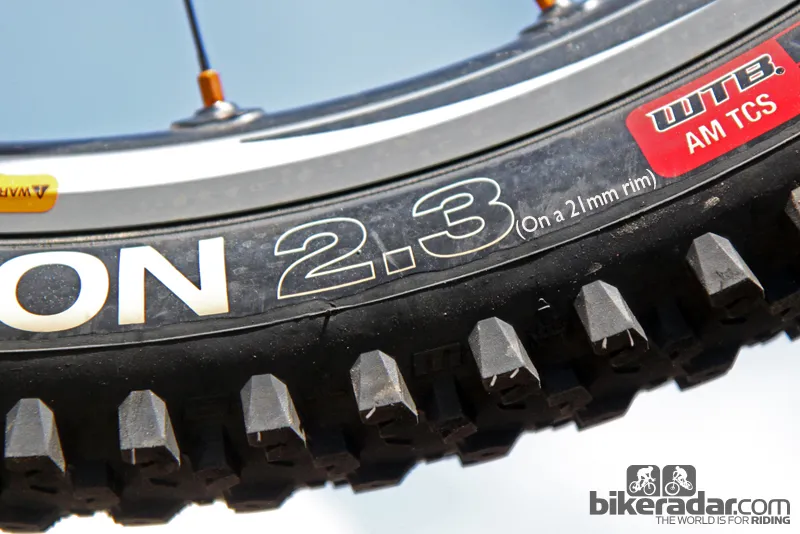
Adding a little more information wouldn't cost much, but it would add a lot
Bontrager and WTB once attempted to institute a more informative label ("XX/YY") several years with the "XX" designating the maximum tread width and the "YY" denoting the maximum casing width. In this way, buyers could theoretically get a better idea of how a tire might behave on the trail.
It was a good effort but one that ultimately didn't catch on.
Instead, I propose that the additional number should be the internal rim width on which the printed tire size is based, such as "700x23(19)" or "27.5x2.25(22)" and so on. This shouldn't be terribly onerous to do. After all, manufacturers should already be basing claimed tire widths on a certain rim width. And they are certainly already printing information on the side of the tires.
Riders would still have to incorporate a slight correction factor depending on their own rim width, which means they'd have to know what it is in the first place. But this would provide a more realistic guideline for how a tire will end up in the real world. In other words, win-win.
I spoke with Keith Bontrager about the tire labeling issue and he suggested that tire companies would also possibly have to readjust their sizing protocols to better reflect modern usage.
"The older version of the tire size protocol was IRC's thing," he said, referring to IRC Tire. "The tires were installed on very wide rims, inflated to 60psi, left that way for 24 hours, topped back up to 60psi and then the casing was measured. If it was a 2.1", it would be within a millimeter of that in that state. Casings stretch when they are new so the high initial pressure and time were useful. The tire was much closer to its final dimensional state afterwards. Recall that 10 years ago there were no high-end rims at that width, and no one rode with 60psi off-road. Tires that were 'on size' when measured were too small on a 17mm rim at 30psi."
Bontrager said printing the internal-rim width would be good, "if everyone wants to do it right. You'll need a pressure spec (one MTB and one road?) to make it real accurate. But it would be good to get all the suppliers on the same page."

The dDstandard tool is useful for calculating how wide a tire will be on your rim
In other words, there's hope. But companies would have to get together and agree to some sort of testing standard. While that certainly wouldn't be easy, everyone would benefit, including riders, product managers, dealers, and nearly everyone else in the bicycle industry.
In the meantime, you can use something like the dDstandard tool developed by the folks at DirectDimension.org and sold by Wheel Fanatyk to get a pretty accurate prediction of how wide a tire will be on your rim.
But what to do if a company decides to adopt that naming convention and still can't get it right? Well in that case, it'd be time to serve up a slice of humble π instead.
James Huang has been writing about bicycle tech since 2005 but also has more than 14 years of experience as a shop mechanic. In that time he's seen plenty of fantastic gear and technology but also a lot of things that have just flat-out pissed him off. You can follow the 'Angry Asian' on Twitter at @angryasian.

